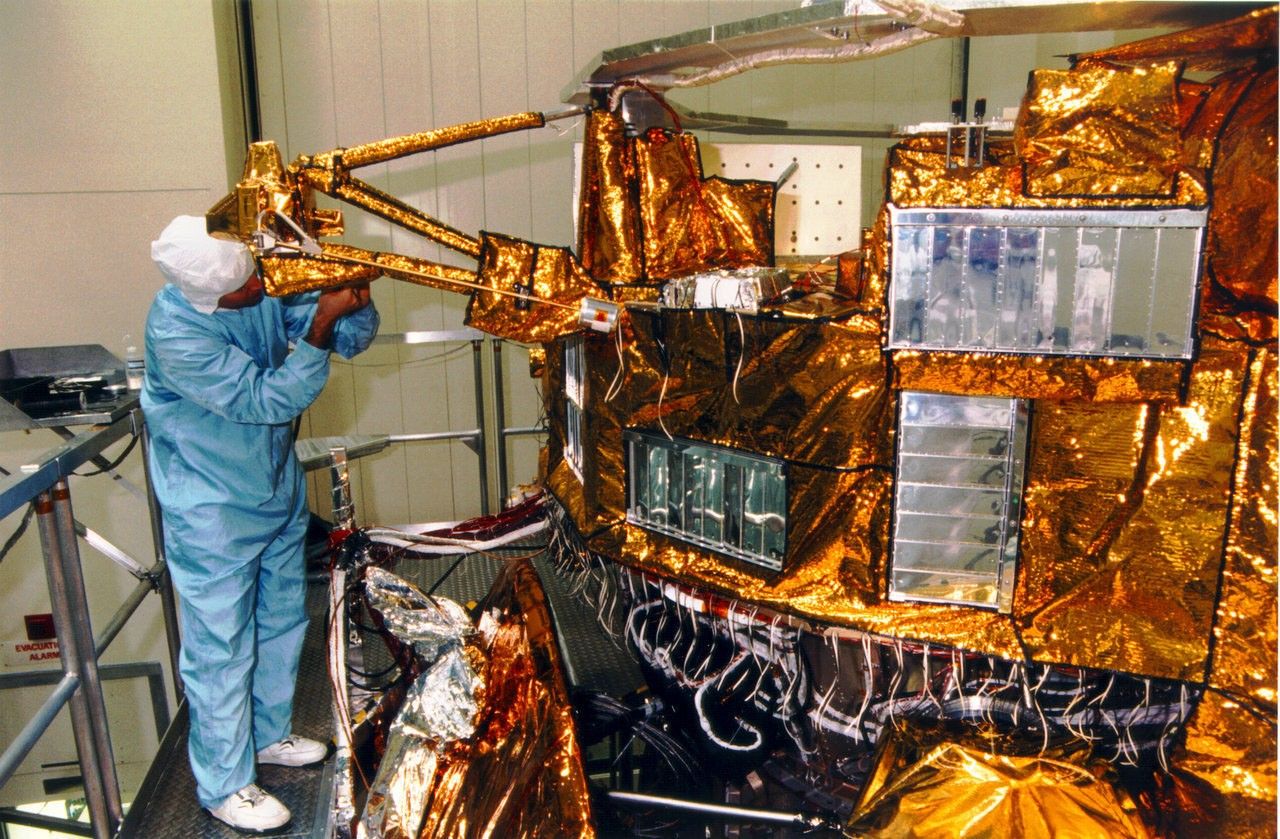How It Worked
Layers of finely sewn, super-strong, extremely lightweight fabrics were installed on the spacecraft prior to launch.
How We Used It
The blankets protected Cassini from extreme heat and cold in deep space, helping to maintain warm, stable operating temperatures. They also protect Cassini's components from micrometeoroid impacts.
Using tools and techniques more often associated with fine tailoring than with space engineering, NASA technicians and engineers spent part of the 1996 holiday season laboring over sewing machines to clothe the Cassini spacecraft in the protective garb it needed to survive its long journey across the solar system and extended exploration at Saturn.
At NASA's Jet Propulsion Laboratory, a unique team of spacecraft shielding technicians cut, stitched and fitted shiny gold-colored and black blankets onto the three-story-tall spacecraft in a clean room. The work required a unique combination of meticulous old-world skills and high-tech materials to produce the finely sewn, super-strong and extremely lightweight thermal blankets that protected Cassini from the extreme hot and cold of deep space.
Though it appears to be gold foil covering the spacecraft, the shiny gold coloring of Cassini's blankets is due to the combination of a transparent layer of amber-colored material on top of a reflective aluminized fabric.
"Our blankets are built unlike any others," said Mark Duran, supervisor of the "shield shop" that provided the space survival gear for JPL's spacecraft and instruments in 1996. Using industrial sewing machines, brown butcher paper patterns and large cutting tables.
Spacecraft blankets are built for long-term durability and high thermal requirements. The blankets keep temperatures onboard the spacecraft at room temperature. In space, temperatures on the unblanketed portions of the spacecraft will range from about 482 to minus 364 degrees Fahrenheit (about 250 to minus 220 degrees Celsius).
All the fabrics used in the blankets needed to stand up to the extreme radiation environment of space and protect the spacecraft for the duration of Cassini's mission. The blankets also provided protection against micrometeoroids -- the dust grains of rocky debris that litter space. Some of Cassini's blankets were sewn with layers of a canvas-like, carbon-coated fabric called beta cloth that is especially effective in protecting against micrometeoroids.
The blankets kept temperatures onboard the spacecraft at room temperature. In space, temperatures on the unblanketed portions of the spacecraft will range from about 482 to minus 364 degrees Fahrenheit (about 250 to minus 220 degrees Celsius.
Cassini's blankets consisted of as many as 24 layers of different fabrics, including aluminized Kapton, mylar, Dacron and other special materials.
The blankets also had to meet tough electrical standards. At both Earth and Saturn, Cassini traveled through environments full of charged particles that can cause an electrical arc to form across the blankets, Duran said, "so a lot of work goes into making sure every single layer of each blanket is electrically grounded." Thin, accordion-like strips of aluminum are carefully sewn in to each blanket to prevent electrical arcing.





























